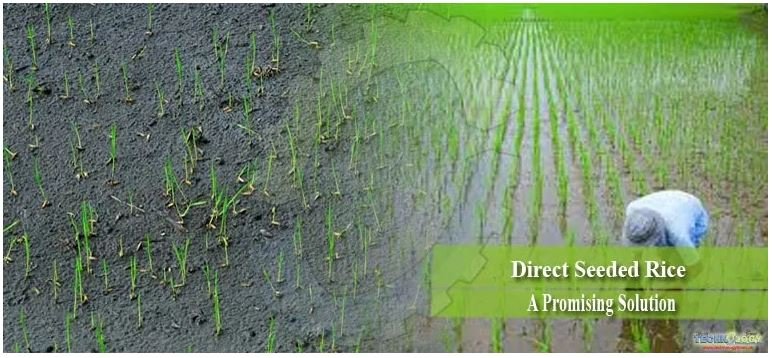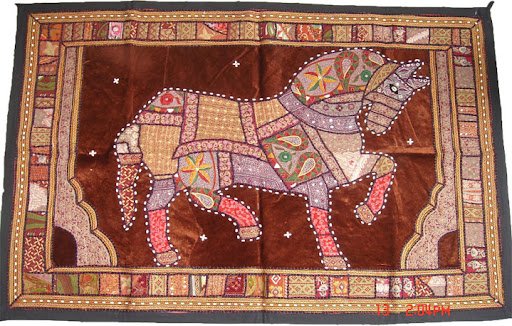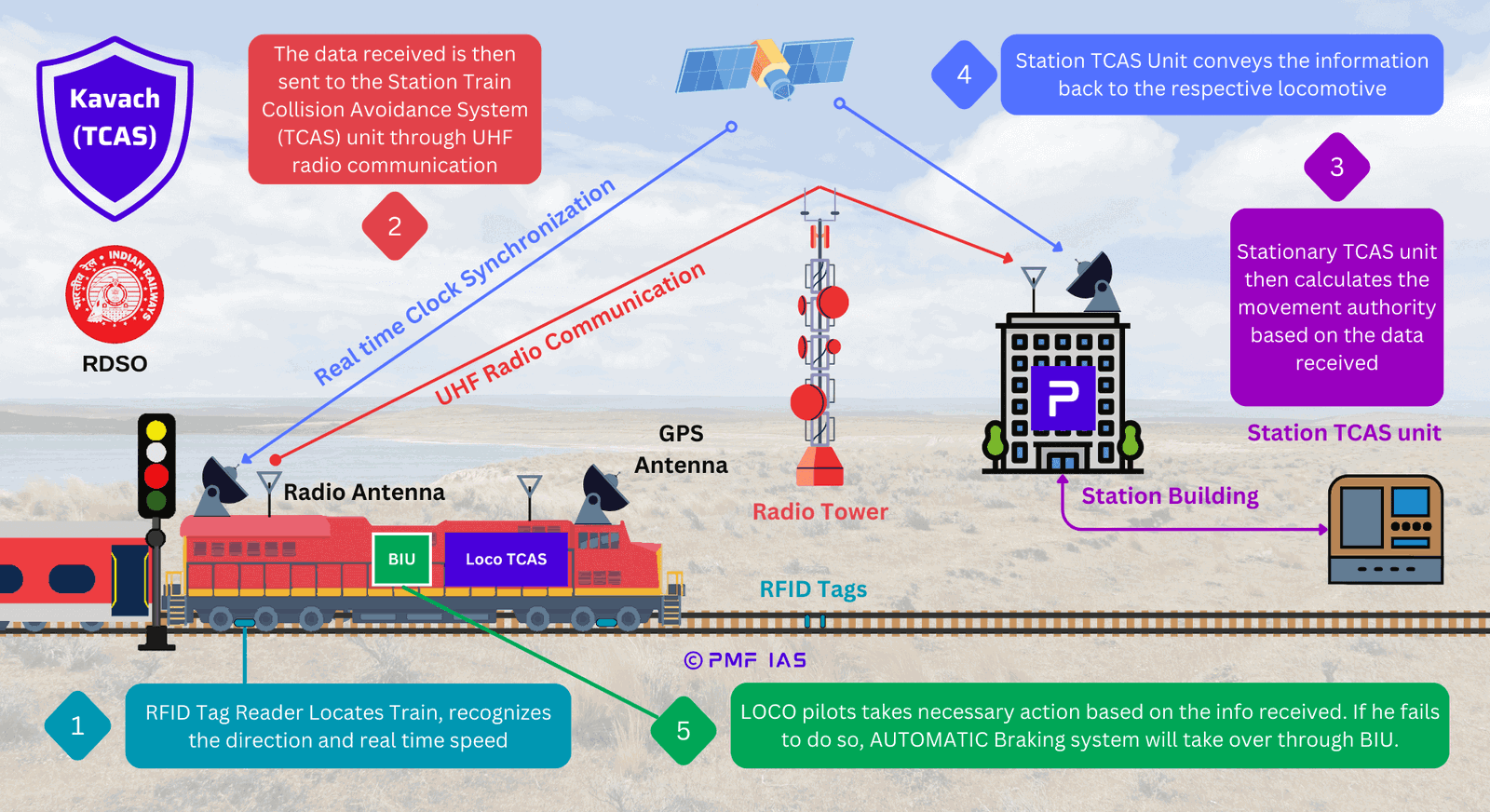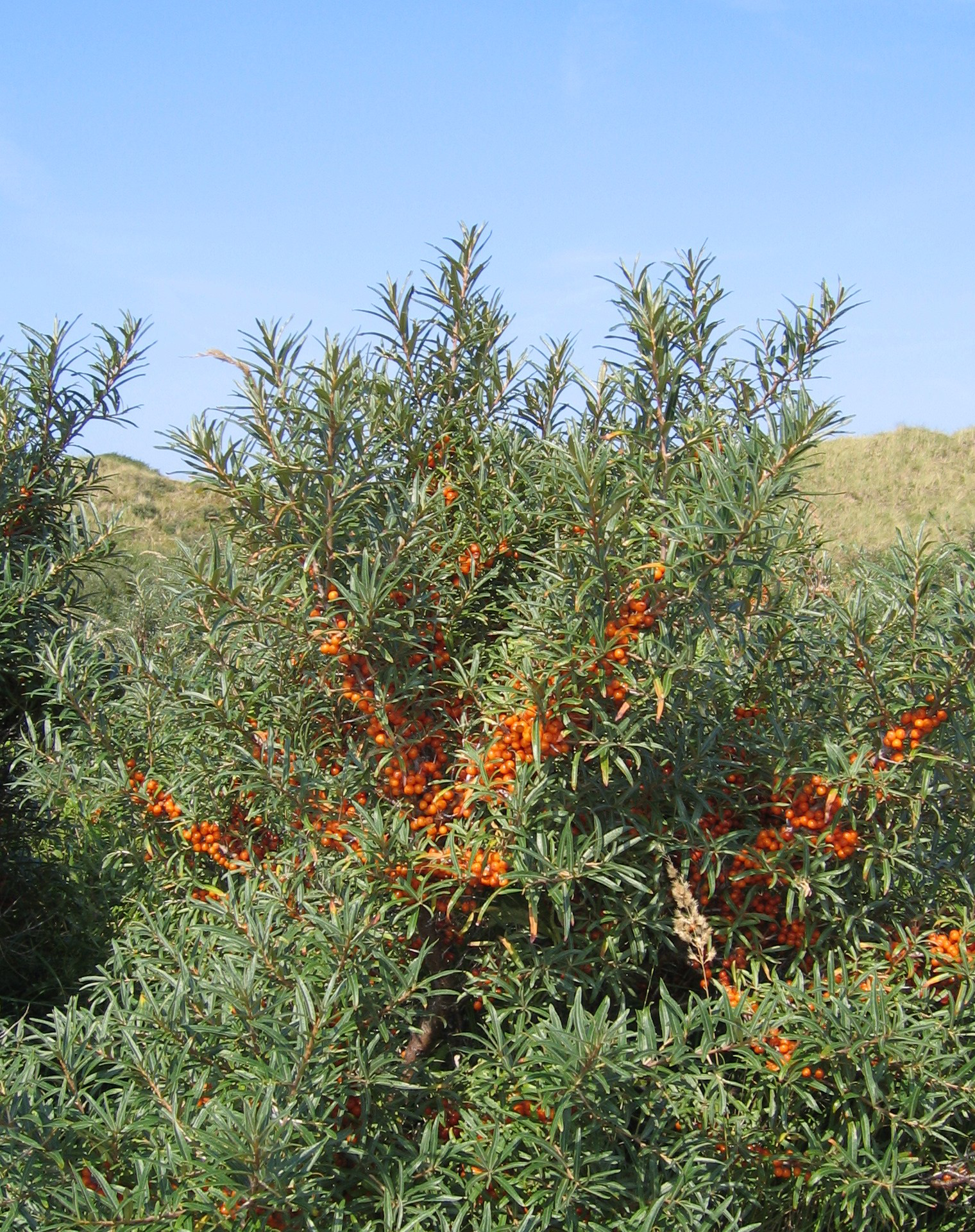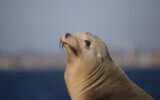
Current Affairs for UPSC Civil Services Exam – March 27, 2024
Subscribers of "Current Affairs" course can Download Daily Current Affairs in PDF/DOC
Subscribe to Never Miss an Important Update! Assured Discounts on New Products!
Must Join PMF IAS Telegram Channel & PMF IAS History Telegram Channel
{GS1 – Geo – EG – Mineral Resources} India applies for mining in Indian Ocean
- Context (TH): India applied to the International Seabed Authority (ISBA) for rights to explore Afanasy Nikitin Seamount and Carlsberg ridge in the Indian Ocean seabed.
- These patches are not part of India’s exclusive jurisdiction.
Afanasy Nikitin Seamount
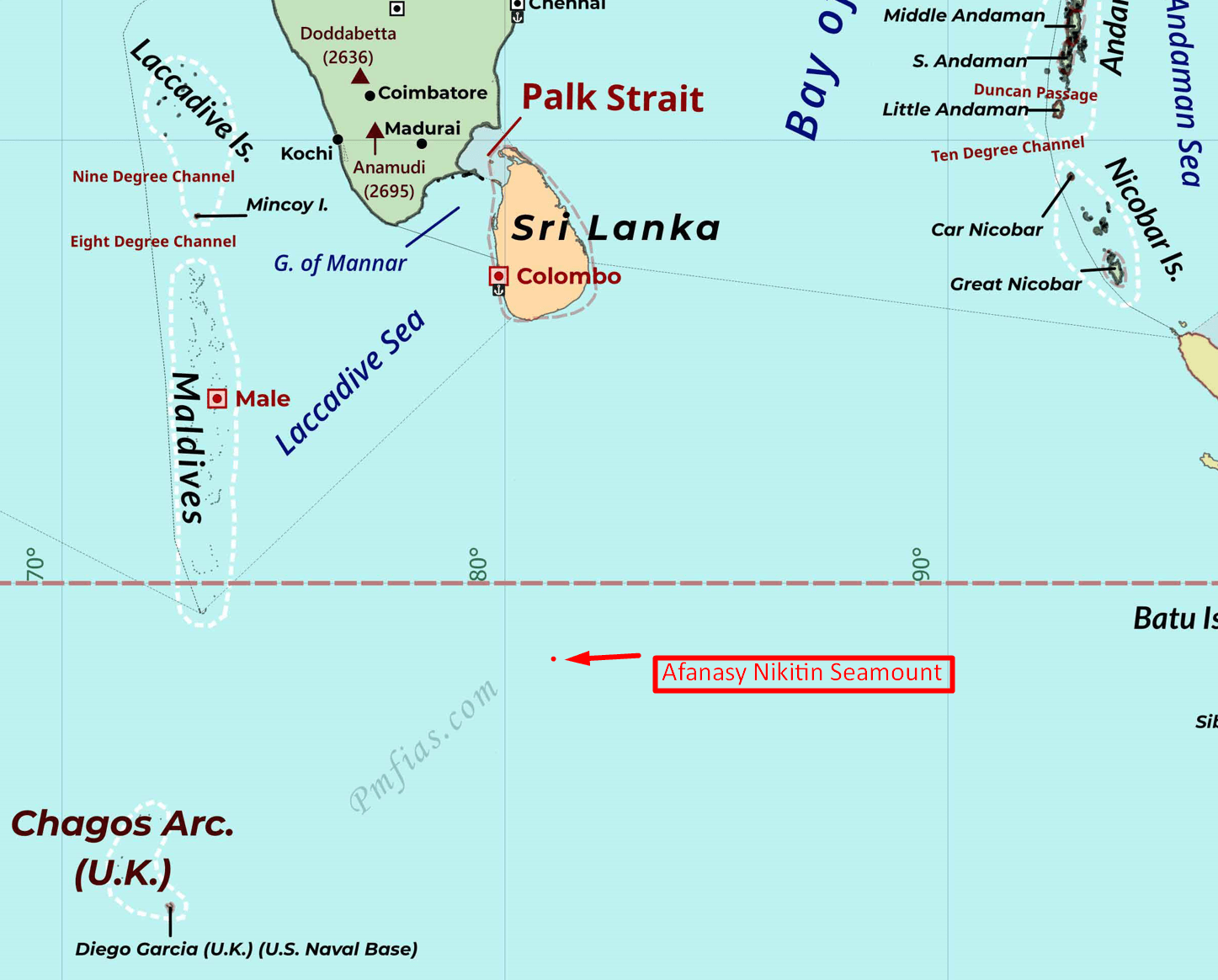
- Cobalt-rich crust and a structural feature (400 km long and 150 km wide) in the Central Indian Basin, located about 3,000 km away from India’s coast.
- It is rich in deposits of cobalt, nickel, manganese and copper.
- Sri Lanka has already claimed rights to the region.
- China is also undertaking reconnaissance in this region.
Carlsberg Ridge
- It is a mid-oceanic ridge area spanning 3,00,000 square km.
- Location: South of Arabian Sea and northeast of Somali basin in the Central Indian Ocean.
- India has applied for investigation for polymetallic sulphides in this region.
|
Rights over Ocean Resources
Exploration rights
- Specific to areas that are part of the open ocean, meaning the ocean — whose air, surface and sea-bed — where no countries can claim sovereignty.
- If a region isn’t classified as part of a country’s continental shelf, it is considered ‘high sea’.
- Such a region is open to any country approaching the ISBA and asking permission to explore.
- Currently, no country has commercially extracted resources from open oceans.
Exclusive rights
- Countries have exclusive rights up to 200 nautical miles and their underlying seabed.
- Extended continental shelf claims are to be supported with detailed scientific rationale, complete with underwater maps and surveys (Can go up to 350 nautical miles).
- Bay of Bengal countries can apply a different set of criteria to make claims on the extent of their continental shelf.
- Using this, Sri Lanka has claimed up to 500 nautical miles (including Afanasy Nikitin Seamount).
International Seabed Authority (ISBA)
Commission on the Limits of the Continental Shelf
|
For more details, visit > Deep Sea Mining.
{GS2 – Governance – Issues} Antitrust complaint against Apple
- Context (IE): The US federal government has filed an antitrust complaint against Apple alleging monopolistic practices & anti-competitive behaviour.
- Apple’s anticompetitive behaviour has helped its shareholders by allowing over $77 billion in stock buybacks in its 2023 fiscal year. However, this behaviour has come at a significant expense to consumers.
- It must be noted that, in 2020, Epic Games sued Apple for alleged monopolistic practices, resulting in a civil suit won by Apple in 2021. However, policy changes were mandated under California law.
Concerns Raised
- Apple restricts innovation and maintains a monopoly by limiting access to core features for competitors while promoting the benefits of its ecosystem. For example,
- Restricting third-party access to the iPhone’s payment chip and favouring Apple’s own services like Apple Pay.
- FaceTime calls only function on iPhone, iPad, and Mac devices.
- Apple has made it difficult for the iPhone to work with smartwatches from rival companies.
- Apple prevented mobile cloud streaming services, which would let users play high-quality games without needing powerful hardware.
- Apple also limits the scope of super apps (an application that offers multiple services, from payments to the ability to book flights and hotels). For example, WeChat is a hugely popular app in China with billions of users.
- However, Apple denies the allegations, asserting that its practices are lawful and necessary for maintaining the quality of its App Store.
EU Regulation on Apple
- European regulators compelled Apple to alter its App Store practices and imposed significant fines of €1.84 billion in connection with a complaint from Spotify about its restrictive App Store practices.
- The EU has labelled Apple as one of the internet gatekeepers.
- The EU is already forcing Apple to allow third-party app stores in Europe, among other changes.
- With the enactment of the EU Digital Markets Act, the European Commission has gained more authority to regulate Big Tech.
{GS2 – IR – Philipines} India Supports Philippines’ Sovereignty
- Context (TH): India’s External Affairs Minister (EAM) is on a three-nation visit to Singapore, the Philippines and Malaysia.
- EAM firmly reiterated India’s support for the Philippines in upholding its national sovereignty.
- This remark comes in the aftermath of aggressive maritime moves by the Chinese Coast Guard against a Filipino supply ship.
- China has responded that Maritime disputes are issues between countries concerned. Third parties have no right to interfere whatsoever.
- The Indian Coast Guard’s pollution-control ship, ICGS Samudra Paheredar, was also hailed for its cooperation on oceanic pollution, illegal fishing, and protecting the environment in the region.
India-Philippines bilateral relations
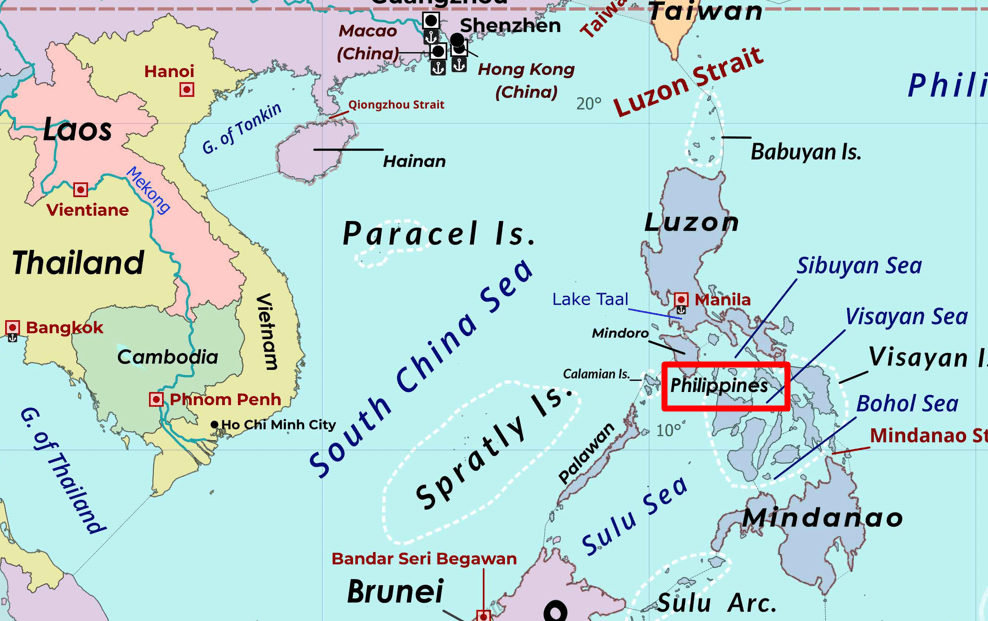
- Cultural connection: The Laguna Copper Plate inscription, the oldest artefact discovered in the Philippines, written in “Kavi” derived from Pallava script, the golden statue of Agusan Tara, and the local version of Ramayana (Maharadia Lawana) indicate cultural connection.
- Diplomatic relations: Formally established on 26 November 1949. Continued Cooperation along the lines of Look East and subsequent Act East Policy of India.
- Economic relations: Bilateral trade has increased from 1.89 billion USD in 2015-16 to 2.84 billion USD in 2021-22.
- Maritime relations: Both are committed to a rules-based order (UNCLOS) in the Indo-Pacific.
- Defence Cooperation: In 2022, Philippines became the first foreign country to procure BrahMos.
For more details, visit > South China Sea dispute.
{GS3 – Agri – Tech} Integrated Command and Control Centre
- Context (IE): Earlier this month, the Agriculture Minister opened the Krishi Integrated Command and Control Centre (ICCC) at Krishi Bhavan in New Delhi.
- It is a big-screen dashboard showcasing all digital innovations in the agricultural sector.
About Integrated Command and Control Centre (ICCC)
- The ICCC is a technology-driven solution with various IT applications and platforms.
- The ICCC employs advanced technologies like artificial intelligence, remote sensing, and Geographic Information Systems (GIS).
- It’s located in the Ministry of Agriculture & Farmers’ Welfare.
- Various information provided: Crop yields, production, drought situation, cropping patterns (geographic region-wise and year-wise) in map, Key Performance Indicators (KPIs), and receive insights, alerts, and feedback on agriculture schemes, programmes, projects, and initiatives.
- The ICCC uses platforms, including the Krishi Decision Support System (DSS), to collect micro-level data, process it, and present the macro picture.
- The ICCC gathers geospatial information from various sources like remote sensing, soil surveys, and weather data from the IMD.
- It also collects sowing data from the Digital Crop Survey and farmer-related data from Krishi MApper.
- Additionally, it includes market intelligence from the Unified Portal for Agricultural Statistics (UPAg) and yield estimation data from the General Crop Estimation Survey (GCES).
- This comprehensive data visualisation allows for quick decision-making.
- The ICCC ecosystem can potentially integrate with the PM-Kisan chatbot in the future.
|
Practical Applications
- Farmer’s advisory: The ICCC provides farmers with personalised advice by combining soil carbon mapping and soil health card data with IMD weather data.
- Further, ICCC can set up a system to create personalized advisories for individual farmers using apps like Kisan e-mitra.
- The system, based on AI and machine learning, will identify farmers using their mobile numbers or Aadhaar and match them with their field information from land records & historical crop data.
- It will then produce customised advisories in the farmer’s local language, facilitated by the Bhashini platform, which supports translation into various Indian languages.
- Drought management: The ICCC correlates yield changes with weather patterns to help officials understand and address yield fluctuations.
- Crop diversification: Analyzing crop diversification maps helps identify areas suitable for different crops, aiding in advising farmers accordingly.
- Farm data repository: The Krishi Decision Support System (K-DSS) acts as an agriculture data repository, using AI and ML models to support evidence-based decision-making and provide customised advice.
- Validation of yield: Krishi MApper data can be compared with GCES yield data to validate yield information.
{GS3 – Envi – Air Pollution} Black Carbon
- Context (TH): A look at Black Carbon and the role played by Pradhan Mantri Ujjwala Yojana (PMUY) in curbing black carbon emissions.
- Black carbon, commonly known as soot, is a solid particle or aerosol (though not a gas) that contributes to the warming of the atmosphere.
- Soot is a form of particulate air pollutant, produced from incomplete combustion.
- According to a 2016 study, the residential sector contributes 47% of India’s total black carbon emissions.
- Industries contribute 22%, diesel vehicles 17%, open-burning 12%, and other sources 2%.
Impact of Black Carbon on the Environment
- Black carbon warms the earth by absorbing heat in the atmosphere and by reducing albedo (the ability to reflect sunlight) when deposited on snow and ice.
- BC is the strongest absorber of sunlight and heats the air directly.
- It emits infrared radiation that increases the temperature.
- In addition, it darkens snowpack and glaciers through deposition and leads to the melting of ice and snow (black carbon is contributing to the melting of Himalayan Glaciers).
- Regionally, BC disrupts cloudiness and monsoon rainfall.
- Black carbon stays in the atmosphere for only several days to weeks.
- Studies have found a direct link between exposure to black carbon and a higher risk of heart disease, birth complications, and premature death.
- Most black carbon emissions in India arise from burning biomass, such as cow dung or straw, in traditional cookstoves.
- Recent estimates have indicated that mitigating residential emissions will avoid more than 6.1 lakh deaths per year from indoor exposure to air pollution.
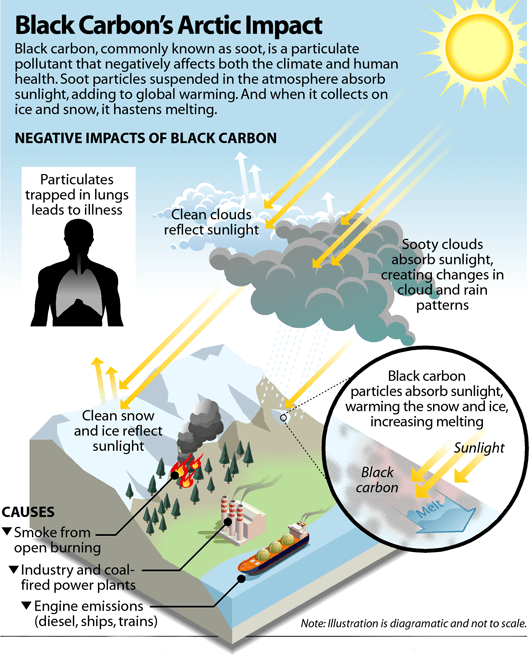
Role of PMUY in curbing black carbon emissions
- The Pradhan Mantri Ujjwala Yojana (PMUY) is a government scheme launched in 2016.
- The primary objective was to make clean cooking fuel available to rural and poor households and reduce their dependence on traditional cooking fuels.
- The PMUY has established infrastructure for LPG connections, including free gas stoves, deposits for LPG cylinders, and a distribution network.
- The programme has thus played a vital role in reducing black carbon emissions, as it offers a cleaner alternative to traditional fuel consumption.
- The programme has provided connections to over 10 crore households as of January 2024.
Challenges faced
- However, in 2022-2023, according to RTI data, 25% of all PMUY beneficiaries, i.e. 2.69 crore people, availed either zero LPG refill or only one LPG refill, meaning they still relied entirely on traditional biomass for cooking.
- Further, The Hindu found that the average PMUY beneficiary household consumes only 3.5-4 LPG cylinders per year instead of the six or seven a regular non-PMUY household uses. This means up to half of a PMUY beneficiary household’s energy needs are still met by traditional fuels.
- Further, with the rapid increase in LPG prices over the last five years, the cost of a 14.2-kg LPG cylinder, even with an additional subsidy, is still about ₹600 per cylinder.
- Another big hurdle to the PMUY’s success is the lack of last-mile connectivity in the LPG distribution network, resulting in remote rural areas depending mostly on biomass.
- One potential solution to this issue is the local production of coal-bed methane (CBM) gas by composting biomass.
- Panchayats can take the initiative to produce CBM gas locally at the village level, ensuring every rural household can access clean cooking fuel.
{GS3 – Envi – Conservation} Green Credits
- Context (TP): The Constitutional Conduct Group, a group of 91 former civil servants, wrote an open letter to the environment ministry, strongly opposing its Green Credit program.
- The program, introduced in October 2023, aims to incentivise environmental action through market mechanisms.
- Companies or individuals can buy green credits by taking actions like tree plantation.
- The group alleges that the government aims to facilitate entrepreneurs’ and industrialists’ acquisition of forest land by allowing them to buy green credits instead of providing land.
- They believe that the government’s intention behind these rules is to divert forest lands quickly and easily to user agencies.
About Green credits
- They are similar to carbon credits used internationally to offset emissions.
- They allow individuals or companies to plant trees or carry out afforestation on degraded land.
- Companies can then use these credits to offset deforestation or non-forest use of land.
- The Indian Council of Forestry Research and Education is the authority to provide green credits.
- Activities eligible for green credits include tree plantation, water management, sustainable agriculture, and air pollution reduction.
- The methodology incentivises tree plantation, with one green credit awarded for every tree planted.
- State governments (state forest departments) must identify degraded land parcels, including open forest and wasteland, for tree plantation.
- These parcels must be free from encumbrances and have a size of five hectares or more.
Major concerns
- Experts argue that the program makes it easier for corporations to get environmental clearances rather than fulfilling environmental obligations.
- According to the Compensatory Afforestation Fund Management and Planning Authority (CAMPA) Act 2016, any forest land diversion must be compensated by afforestation on an equal amount of land.
- However, the new policy allows companies to offset deforestation by purchasing green credits instead of providing land for afforestation.
- Another major concern is how “degraded land” is defined, as it’s not mentioned in official forest reports. This could lead to confusion about which areas are suitable for tree plantation.
- The proposal could also affect tribal and pastoral communities that rely on these lands for survival. Allowing the forest department to allocate degraded forests may impact land use diversity and community resources.
- The policy is criticised for being unscientific and not considering different ecologies’ biodiversity needs. Uniform afforestation may harm many species in Indian forests.
Way forward
- Instead of depending on the private sector, the letter suggests using government funds to restore lands.
{GS3 – IE – Employment} India Employment Report, 2024
- Context (TH): The India Employment Report 2024 was published by the International Labour Organisation (ILO) and Institute of Human Development (IHD) recently.
Key Findings
Youth Employment

- The report reveals that almost 83% of India’s unemployed workforce consists of young people.
- The percentage of unemployed youth with secondary or higher education has nearly doubled from 35.2% in 2000 to 65.7% in 2022.
- Many educated young individuals prefer to wait for better job opportunities rather than accepting low-paying, insecure jobs.
- Many young workers lack essential skills.
- 75% can’t send emails with attachments.
- 60% struggle with copying and pasting files.
- 90% can’t input a mathematical formula into a spreadsheet.
Employment and unemployment Indicators
- The Labour Force Participation Rate (LFPR), Worker Population Ratio (WPR), and Unemployment Rate (UR) worsened from 2000 to 2018 but improved after 2019.

Farm & Non-Farm employment
- The basic issue remains the insufficient growth of non-farm sectors and their basic ability to absorb workers from agriculture.
- Non-farm employment grew faster than farm employment until 2018. During this period, Labor from agriculture primarily moved to the construction and services sectors.
Formal and Informal jobs
- Nearly 90% of workers are in informal jobs.
- The proportion of regular employment increased until 2018 but declined after that.
- Livelihood insecurity is widespread, especially in the non-agricultural organised sector.
- Few workers have social protection coverage, and contractual work is on the rise.
Women Employment
- India also faces a significant gender gap in the labour market, with low rates of female participation.
- Unemployment is a considerable challenge for young women, especially those with higher education.
Scheduled Castes and Scheduled Tribes Employment
- The report highlighted growing social inequalities despite affirmative action and targeted policies.
- Scheduled Castes and Scheduled Tribes still face challenges in accessing better job opportunities.
- Economic necessity drives higher work participation among these groups, but they tend to be engaged in low-paid temporary and informal employment.
- Although there has been progress in educational attainment across all groups, social hierarchy within these groups persists.
{GS3 – IS – Cybersecurity} Crypto funding North Korea’s weapons
- Context (IE): United Nations panel report set up to monitor North Korea’s compliance with international sanctions has claimed that Pyongyang continues “malicious” cyberattacks.
- The proceeds have funded as much as 40% of the cost of its weapons of mass destruction programs.
- The reach and complexity of the crypto hacking efforts of the Lazarus Group were shocking.
- The crypto industry “is extremely concerned” that a powerful state actor is apparently carrying out virtual currency thefts with impunity.
Lazarus Group
- It is widely understood to be the cover for North Korea’s state-run hacking team.
- It was believed to be involved in the Bangladesh Bank heist, along with the thefts from crypto entities Ronin Network, Horizon, and Atomic Wallet.
- Lazarus also appears to be going after smaller groups and individuals with a wide net and repeatable attack approach.
{GS3 – S&T – Tech} Smart Meters
- Context (IE): Kerala’s move towards an alternate model for the rollout of smart electricity meters, may hamper the Centre’s Rs 3 lakh crore smart meters project.
Smart Meter National Programme
- The Smart Meter National Programme (SMNP), launched by the Government of India in 2017, aims to replace 250 million conventional meters with smart meters by 2022.
- Implemented by: Energy Efficiency Services Limited (EESL), a JV of PSUs under the Ministry of Power.
- The Programme is implemented under Design-Build-Finance-Own-Operate-Transfer (DBFOOT) model by private operators across states through totex (capex plus opex) contracts, which offer a part of the meter cost in the form of upfront payment while the rest is to be amortised in the monthly bills.
Smart Meters
- Smart meters are a new generation of energy meters that allow one to learn about their consumption pattern and help utilities conduct system monitoring and customer billing without manual intervention.
- Smart meters transmit information about power consumption every 15 minutes or hourly to utility providers.
- Since they are connected to the internet, smart meters can communicate information about usage to the consumer and also to the utility provider for monitoring purposes and accurate billing.
- Currently, traditional meters require manual inspection every month to generate bills for consumers.
- Their aim has been to improve the effectiveness of the Time of Day (ToD) pricing of electricity, for which smart meters are essential.
- ToD pricing essentially refers to differential electricity pricing at the consumer end across peak and non-peak hours.
- Smart metering is being driven primarily by the desire to lower distribution losses, and accordingly, smart meters incorporate remote disconnection features.

Benefits of Smart Meters
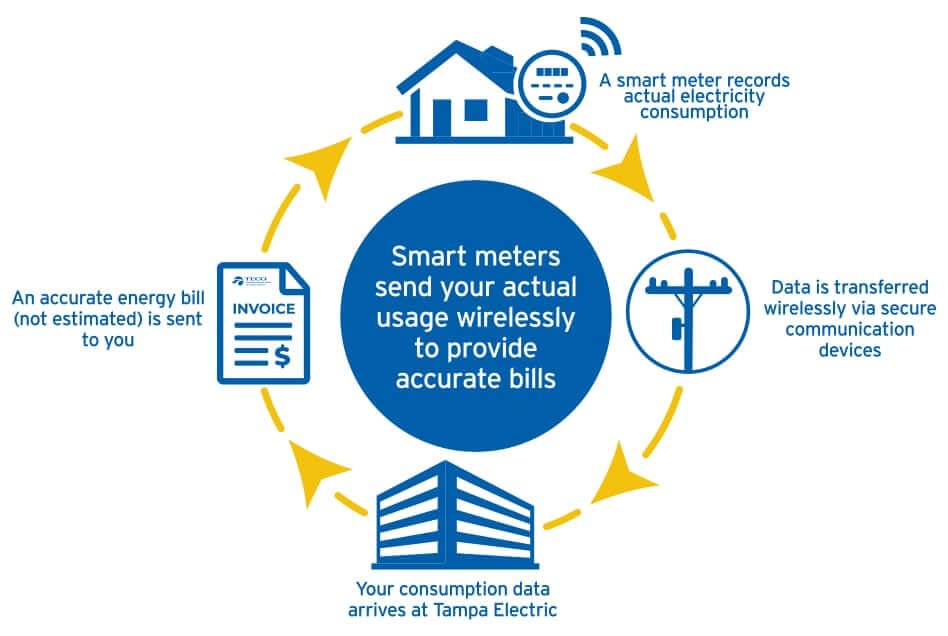
- Energy Efficient: By keeping regular tabs on how much energy you’re consuming; you will be encouraged to adjust your electricity usage and save money as well as resources.
- User-friendly: Prepaid smart meters send alerts of low balance in the account so that users can recharge well in advance and avoid any last-minute hassles.
- Operational Efficiency: The existing manual system for collecting revenue for power usage is not only inefficient but also causes huge losses to power distribution companies.
- Highly accurate prepaid smart meters would significantly reduce these losses and help utilities improve the power supply.
- Green Energy: By taking a step closer towards a smart energy system, prepaid smart meters reduce our dependence on fossil fuels, thereby reducing our country’s carbon footprint.
{Prelims – In News} Baltimore’s Francis Scott Key Bridge
- Context (TH): A container ship collided with one of the pillars supporting the Francis Scott Key Bridge in Baltimore, Maryland, USA.
- The collision caused a section of the bridge to collapse, leading to cars plunging into the Patapsco River.
- The Francis Scott Key Bridge in Baltimore is a 2.6-kilometer (1.6-mile), four-lane Bridge named after the man who wrote the words of the Star-Spangled Banner, the US national anthem.
- A steel arch continuous-through truss bridge with a main span of 1,200 feet (366 m) and a total length of 8,636 feet (2,632 m).
- It opened in 1977 and was initially known as the Outer Harbor Crossing.
- The bridge leads to the Port of Baltimore, the deepest harbor in Maryland’s Chesapeake Bay.
- It is also the largest U.S. port by volume for handling farm and construction machinery, as well as agricultural products, and a cruise terminal.
{Prelims – PIN India} Kelambakkam-Covelong brackish water system
- Context (TH): A congregation of migratory waders was observed in the Kelambakkam-Covelong system.
- The Kelambakkam-Covelong system is situated near Chennai in the southeastern part of India.
- It serves as a critical stopover for numerous migratory wader species during their annual migration.
- This brackish water system plays a pivotal role in the Central Asian Flyway.
{Prelims – PIN India} Pulicat bird sanctuary
- Context (IE): The TN government is planning to denotify a sizeable area of Pulicat bird sanctuary.
- Patta land in 13 revenue villages located inside the biodiversity-rich area may be excluded from the sanctuary after completing the claim process under the Wildlife (Protection) Act of 1972.
- Pulicat Lake Bird Sanctuary is the second-largest bird sanctuary in India.
- The sanctuary cuts across Nellore district of Andhra Pradesh and Thiruvallur district of Tamil Nadu.
- It hosts a large number of migratory birds each year during winter, including gulls, terns, plovers, shanks, curlews, and storks.
- The Sanctuary is home to a variety of bird species, such as flamingos, pelicans, storks, herons, and ducks.
- The main attractions within the Sanctuary include Nelapattu, Vedurupattu, Bodilingalapadu, etc.
Pulicat Lagoon
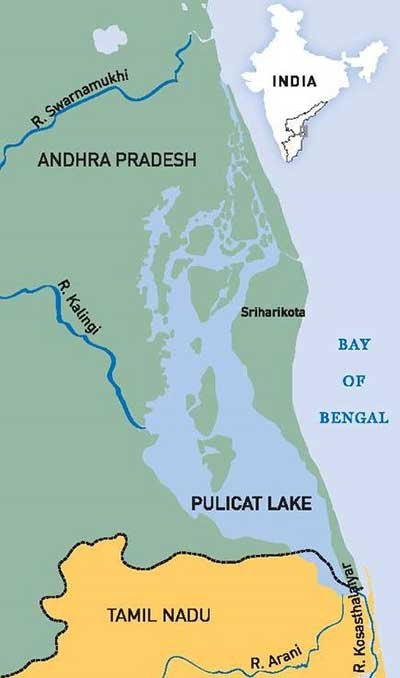
- Pulicat is a vast, shallow, brackish-water lagoon covering an area of 759 sq km along the coast of the Bay of Bengal.
- It is the second largest brackish water lagoon in India after Odisha’s Chilika lake
- The lake receives its water from the Arani River at its southern tip, the Kalangi River from the Northwest, and the Swarnamukhi River at the northern end.
- The lake runs parallel to the Bay of Bengal and has a sand bar, making it a lagoon of its own kind.
- The barrier island of Sriharikota separates the lake from the Bay of Bengal.
- Sriharikota is renowned as India’s rocket launch pad and is home to Satish Dhawan Space Centre.
- It supports the largest congregation of Flamingoes is Andhra Pradesh.
- The lake has 16 island villages and 30 villages adjoining the lake. The people depend on the lake for their livelihood.
{Prelims – S&T – Defence} ICG Ship Samudra Paheredar
- Context (PIB): The Indian Coast Guard ship Samudra Paheredar arrived at Manila Bay, Philippines, to demonstrate ICG Marine Pollution Response capabilities.
- The ICG ship is on an overseas deployment to ASEAN countries, including the Philippines, Vietnam, and Brunei. It marks the 3rd consecutive deployment by the ICG to ASEAN countries.
- Additionally, 25 National Cadet Corps (NCC) cadets participate in the “Puneet Sagar Abhiyan” initiative during the visit.
ICGS Samudra Paheredar
- ICGS Samudra Paheredar is a specialized Pollution Control Vessel (PCV) dedicated to environmental protection and pollution response at sea.
- It is the 2nd PCV of India, commissioned in 2012 following ICGS Samudra Prahari.
- The vessel was indigenously built by ABG Shipyard, located in Surat, Gujarat.
- The ship is stationed on the East Coast of India in Vishakhapatnam, Andhra Pradesh.
- The ship measures 94.10 meters in length and has a maximum displacement of 4,300 tons.
- It is powered by 3,000-kilowatt twin diesel engines, augmented by twin shaft generators, enabling it to achieve a maximum speed of 21 knots.
- At economical speed, the vessel has an impressive endurance of 6,500 nautical miles and can remain at sea for up to 20 days.
- It boasts a substantial storage capacity of 502 kilolitres, facilitating efficient oil-recovery operations.
- ICGS Samudra Paheredar is capable of operating one twin-engine ALH/Chetak helicopter, enhancing its operational capabilities and versatility.
Indian Coast Guard (ICG)
- Formally established in 1978 by the Coast Guard Act 1978.
- Operates under the Ministry of Defence.
- Headed by the Director General Indian Coast Guard (DGICG).
- Mission: Safeguarding India’s maritime interests and enforcing maritime law.
- Jurisdiction: Covers India’s territorial waters, contiguous zone, and exclusive economic zone.
- Roles: Search and rescue operations, maritime law enforcement, pollution control, marine environmental protection, and coastal security.
Puneet Sagar Abhiyan
National Cadet Corps (NCC)
|




![PMF IAS Environment for UPSC 2022-23 [paperback] PMF IAS [Nov 30, 2021]…](https://pmfias.b-cdn.net/wp-content/uploads/2024/04/pmfiasenvironmentforupsc2022-23paperbackpmfiasnov302021.jpg)

